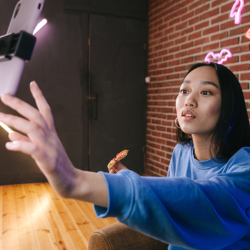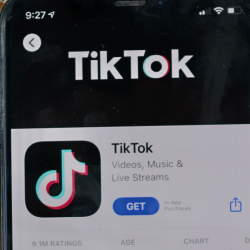In today’s fast-changing media world, it’s easy to get caught up in the latest trends: TikTok, connected TV, metaverse, Roblox, mixed reality… the list changes daily, as we chase after the next shiny object. We suffer from SOS — shiny object syndrome. However, effective marketing isn’t about chasing the next big thing; it’s about understanding your audience, and their activities and behaviour. Who are they? Where do they spend their time online? What captures their attention? These are the big questions that matter.
Focus on the audience, not the medium
Today we have countless ways to reach people, but this has also led some marketers to focus more on just being present on every trending platform rather than truly connecting with their audience.
In 2022, McKinsey was falling over itself to play up marketing potential of the metaverse. The opening line of their report was: ‘Metaverse is too big for companies to ignore.’ Well, 99% of my clients have rather successfully ignored it for the past two years since. It’s so easy to get sucked in the hype, it’s just the trend names that change. This trend-chasing can weaken marketing efforts by missing the crucial goal: real engagement with people. Whether you’re marketing to other businesses (B2B) or directly to consumers (B2C), the success of your efforts depends on how well you know and connect with your audience.
B2B vs B2C marketing: tailoring your approach
In B2B marketing, a lot of your success depends on precision in targeting. Mainstream media channels that cater to broad demographics often fall short because they do not reach the niche professional groups that B2B marketers target. For instance, while TikTok may be a booming platform for B2C interest-based marketing, it’s generally ineffective for B2B unless your target group is in a field where you can mask your product advertising under the hood on influencer marketing.
This can be seen with trends like Gen AI, where influencers are more or less selling their own product, while being helpful in the topic.
B2B marketing requires in-depth research to first determine which channels are most relevant to your specific audience and then to ensure these channels provide the tools necessary for precise targeting. This might involve specialised platforms or industry-specific publications that allow for detailed segmentation and tailored messaging.
The power of niche tools
Thankfully, the digital revolution has equipped marketers with powerful tools to conduct this essential research. Platforms like Sparktoro, Zoominfo, and Audiense can uncover where specific professional groups spend their online time, from social platforms to forums to professional networks. Similarly, tools like SEMrush and SimilarWeb offer insights into traffic patterns and keyword effectiveness, providing a comprehensive view of online behaviours.
These tools are great, not only for discovering where your audience is but also for understanding their online activities, preferences and favourite influencers. This data-driven approach is crucial, particularly in a cookie-less world, where the ability to track and analyse digital footprints accurately has decreased from what it used to be.
B2C marketing: utilising broad data sets
While B2C marketing also benefits from precision, the approach can be broader as you generally cater to far wider target groups, even entire demographics. The targeting options of most platforms are already built to reach B2C audiences, so in general it is easier to know what media or platform to try if you are just able to get some data about your target groups interests and motivators.
Platforms like Statista and GWI provide expansive datasets that help marketers tap into large-scale trends and demographic insights, for example Statista’s Consumer Trend Report or GWI’s ‘Connecting the dots’ piece about the same topic. This data can be used to do broader searches with the same tools as you would use for B2B. So, you know your target group is interested in ‘flexitarianism’ — get a list of websites they frequently visit, all the way from verywellfit.com to foodunfolded.com, check out their favourite subreddits, podcasts, YouTube channels and social influencers. Just don’t go blind into a media channel that is a ‘rising trend’.
As the media world continues to expand and transform, the focus should not change from what is truly essential — connecting with your audience on the channels that matter to them. The effectiveness of a marketing strategy is not dependent on the medium’s popularity, but on its ability to enable genuine interactions. It’s about leveraging the right tools to gain deep insights into your audience and using those insights to craft messages that not only reach but also resonate.
Let’s be smart and shift our focus from rising and falling media trends, to building connections through strategic, data-driven audience engagement. That way we can ensure that our marketing efforts are not just seen but felt, creating lasting impressions that drive growth and brand loyalty, rather than being dependent on the latest, overhyped channel.
Featured image: Michelangelo Buonarroti / Pexels































